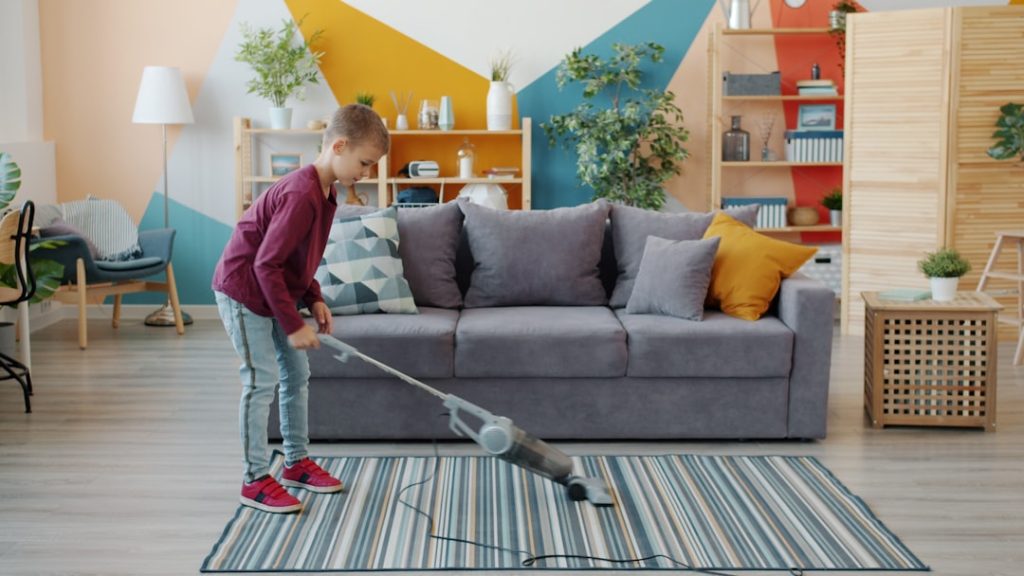Pet owners love their furry friends, but there’s no denying that pets can create a considerable amount of mess, particularly when it comes to hair. Traditional vacuuming can feel like a never-ending chore, especially in households with shedding breeds. That’s where robotic vacuums come in. These smart cleaning devices offer a modern and efficient solution to managing pet hair, keeping floors tidy with minimal effort. But not all robot vacuums are created equal. When considering a robot vacuum specifically for pet hair, there are several crucial factors to take into account.
Why Pet Hair Is a Unique Challenge
Pet hair behaves differently from other household debris. It tangles easily, clings to fabric and carpet, and disperses quickly across rooms. Some robot vacuums may be good at picking up dust or crumbs but struggle when it comes to animal fur—especially if it sticks to surfaces or collects in clumps. That’s why it’s essential to choose a vacuum explicitly designed to handle the unique demands of pet households.
In addition to hair, many pets also contribute to dander and tracked-in dirt. A suitable robot vacuum should not only remove surface debris but also improve air quality by capturing allergens from shedding animals.
Key Features to Look for in a Robot Vacuum for Pet Hair
- High Suction Power: Pet hair often embeds itself in carpet fibers. Look for models with strong suction ratings, often quantified in Pascals (Pa), to ensure effective cleaning.
- Tangle-Free Brush Roll: A vacuum that continually gets clogged by hair isn’t truly convenient. Seek options with rubberized brush rolls or self-cleaning mechanisms that prevent tangles.
- HEPA or High-Quality Filters: If your pet sheds dander along with fur, a good filter will capture fine particles and reduce allergens—an important health benefit for allergy sufferers.
- Sensors and Smart Mapping: Advanced models navigate efficiently, avoiding obstacles and minimizing missed spots. Pet-safe navigation prevents startle or injury to your animal companions.
- Noise Level: Pets can be sensitive to sound. A quieter vacuum is more likely to coexist peacefully with cats or dogs in the home.
Top Robot Vacuum Models for Pet Hair in 2024
With a wide variety of models available, some stand out in terms of performance, durability, and pet-hair-specific capabilities. Here are a few top-rated options:
iRobot Roomba j7+
The Roomba j7+ combines precision mapping, tangle-resistant rollers, and powerful suction. Its standout feature is obstacle recognition, which can distinguish between pet waste and objects like toys. The self-emptying bin is a major plus for convenience, meaning less maintenance even in heavy shedding seasons.
Roborock S8 Pro Ultra
This hybrid model vacuums and mops, making it ideal for homes with both carpets and hard floors. Its dual rubber brush design efficiently lifts hair without tangling, and the base includes automatic mop washing and drying functions. Roborock’s intelligent mapping technology also enables customizable cleaning zones and no-go areas.
Eufy RoboVac X8 Hybrid
The Eufy X8 Hybrid comes with twin turbines that deliver enhanced suction separately for each intake. It’s known for its balance between performance and price. Although it lacks a self-emptying feature, it makes up for this with a quiet operation and precise room mapping.
Maintaining a Robot Vacuum in Pet-Friendly Homes
Even the best robot vacuum needs regular upkeep, especially when dealing with pet hair. Owners should expect to do the following:
- Empty the Dustbin Frequently: Pet hair builds up quickly, filling small bins fast. Some vacuums can self-empty, but manual ones may require daily disposal during shedding periods.
- Clean the Brushes Weekly: Hair can still get caught in rotating brushes. Most models come with a cleaning tool to assist with this task.
- Replace Filters Regularly: Maintain air quality and suction power by changing filters according to the manufacturer’s instructions.
By staying ahead of maintenance, users ensure peak performance and extend the life of their investment.
Potential Challenges and How to Overcome Them
While robot vacuums are innovative, they are not without limitations. They can get stuck on rugs, have trouble with high thresholds between rooms, or miss fur build-up along baseboards. These common issues can typically be managed by:
- Creating a Pet-Friendly Cleaning Schedule: Running the vacuum more frequently reduces the amount of build-up, helping it work more efficiently during each cycle.
- Using Boundary Settings: Modern vacuums allow setting virtual walls or no-go zones, keeping them out of problematic areas—or away from anxious pets.
- Prepping the Area: Picking up toys, cords, and blankets before a cleaning cycle will reduce the likelihood of entanglement or interruption.
Some owners may need to combine the robot vacuum work with manual cleaning, particularly in high-traffic or difficult-to-reach areas. But overall, they significantly reduce the time and effort spent on floor maintenance.
Robot Vacuums vs. Traditional Vacuums: Which Is Better for Pet Hair?
Robot vacuums offer convenience and automation, while traditional vacuums typically provide deeper cleaning and broader versatility. Here’s a comparison:
| Feature | Robot Vacuums | Traditional Vacuums |
|---|---|---|
| Ease of Use | Fully automated, scheduled cleaning | Manual operation required |
| Coverage | Great for daily maintenance | Better for deep or spot cleaning |
| Pet Hair Efficiency | Excellent with right model | Generally strong but more labor-intensive |
| Noise | Usually quieter | Can be loud and intimidating to pets |
In essence, robot vacuums aren’t a full replacement for deep cleaning tools, but they significantly reduce the need for frequent manual vacuuming, keeping surfaces much more manageable between cleanings.
The Verdict: Is a Robot Vacuum Worth it for Pet Owners?
For many pet owners, a robot vacuum transforms the relationship they have with cleaning. What once felt like an ongoing battle against floating fur and dander now becomes a mostly hands-off process. Though initial investment costs can be high—especially for top-tier models—the long-term convenience, time saved, and cleaner living environment justify the expenditure for most.
If you’re often battling pet fur on your floors and furniture, a purpose-built robot vacuum can be a valuable and reliable tool to help maintain your home’s cleanliness and comfort—for both you and your beloved pet.

